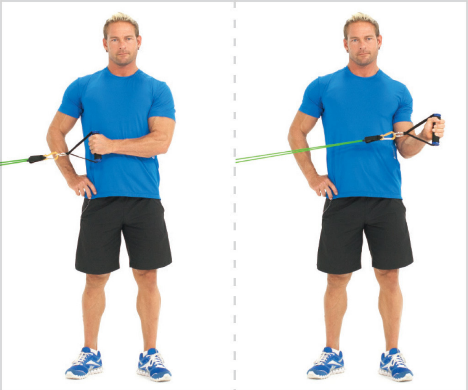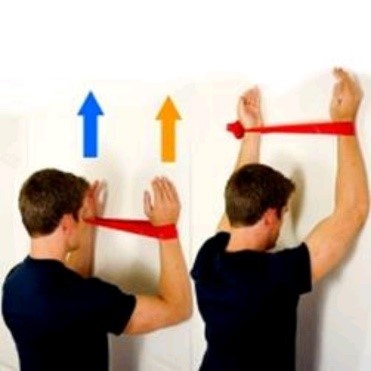Shoulder Stability in Overhead Sports
Posted on February 7th, 2023 by Andries
Shoulder stability and mobility should have a spot in any well thought-out training program for any athlete. Stability and mobility will help with soft tissue health, as well as allow an athlete to perform at his/her highest potential. Good mobility in the shoulder, thoracic and cervical spine can have a positive impact on athletic performance and career longevity. Poor stability and mobility in these areas can lead to compensatory patterns and results in decreased performance and increase risk of injury.
The shoulder is one of the most complex parts the body. The shoulder is a “ball and socket” joint with the socket portion being shallow and therefore providing very little stability via the bony anatomy. As a result, you have to rely on other structures to keep your arm securely inside the shoulder blade. During arm movement the stabilization process is much more complex and requires the four muscles of your rotator cuff to fire to maintain proper positioning of your shoulder joint.

The action of lifting your arm up above your head requires movement from both your shoulder blade and your arm in order to reach your full range of motion. For this movement to be performed correctly, it requires the proper muscle firing patterns in the shoulder complex. Athletes tend to forget about the small stabilizing muscles of the rotator cuff during their workouts and instead focus on the larger muscle groups. These big muscle groups, especially the “pushing” muscles which are used frequently in sports, can become overdeveloped in comparison to the small stabilizing muscles and result in injuries from this muscle imbalance. One of the most common issues from a muscle imbalance like this is that the small rotator cuff cannot compete with the larger muscles and is unable to perform its job of providing small rotational movements to the ball part of the joint to prevent it from hitting into the socket during arm movements.

It is important to remember that the rotator cuff is not only firing during athletic activities, it is also responsible for proper positioning of your arm and shoulder blade while you sit with good posture. Increasing the endurance of the rotator cuff will assist in maintaining the integrity of the muscles throughout the season of an overhead athlete. This is why it is important to remember that overhead sports require full kinetic-chain movements for maximum power. It is vital to keep the core and hips strong and mobile as well in order to decrease the stress placed across the shoulder during the throwing or shooting motion.
A lack of overhead mobility could be caused by:
- A lack of thoracic mobility
- A lack of mobility in the shoulder joint
Results of a lack Shoulder stability:
A lack of shoulder overhead mobility, can cause compensations in your lifting or throwing technique, which could cause injury or place strain on other muscle groups. Additionally, a lack of overhead shoulder mobility can contribute to pain in the neck or shoulder.
Tweet